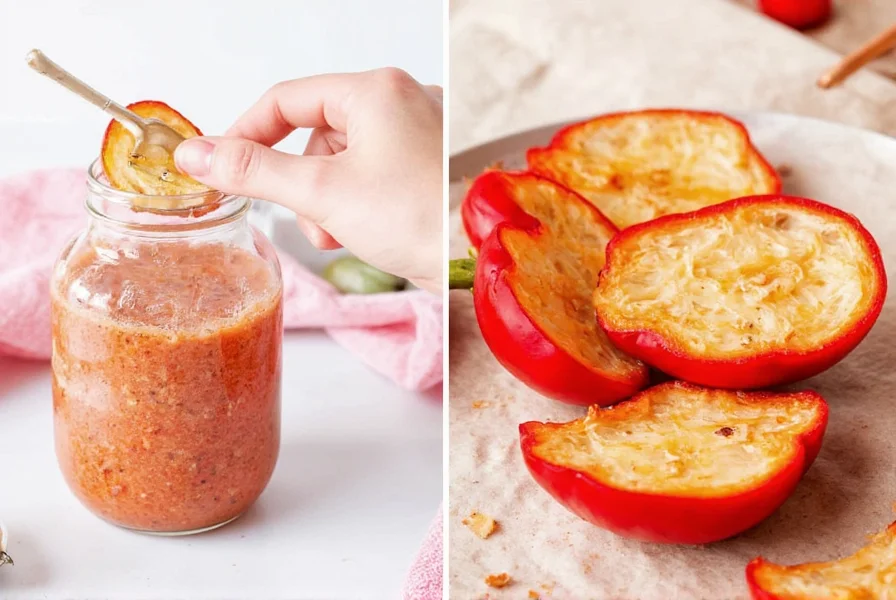Introduction: Mastering Flavor Science
Flavor is a complex sensory experience that goes beyond basic taste. Understanding how taste, smell, and texture interact allows you to transform ordinary dishes into extraordinary culinary experiences. This guide explores the science behind flavor and provides actionable techniques to harness spices effectively in your cooking.
The Science of Flavor: How Your Senses Work Together
Flavor perception involves multiple sensory systems working in concert:
- Taste: Your tongue detects five primary sensations - sweet, salty, sour, bitter, and umami. These are the foundation of flavor perception.
- Smell: Approximately 80% of what we perceive as flavor comes from olfactory receptors in your nose. Aromatic compounds in spices directly stimulate these receptors, creating complex flavor profiles.
- Mouthfeel: Texture, temperature, and even visual appearance influence how we experience food. Creamy textures can enhance sweetness perception, while crisp textures can make flavors seem more vibrant.
Spice Chemistry: How Compounds Create Flavor
Spices contain volatile organic compounds that interact with your sensory receptors. For example:
- Capsaicin in chili peppers binds to TRPV1 receptors, creating a burning sensation
- Linalool in cinnamon and basil creates floral notes that enhance sweetness perception
- Allicin in garlic releases sulfur compounds that develop complex savory flavors when cooked
Essential Spice Categories and Their Applications
| Spice Category | Key Compounds | Flavor Profile | Culinary Applications | Scientific Tip |
|---|---|---|---|---|
| Warm Spices | Cinnamaldehyde, Eugenol | Sweet, woody, slightly spicy | Baking, mulled beverages, braises | Toast whole spices before grinding to release 30-40% more volatile compounds |
| Earthy Spices | Curcumins, Cuminaldehyde | Rich, nutty, deep | Curries, stews, roasted vegetables | Combine with acidic ingredients (tomatoes, vinegar) to enhance absorption of fat-soluble compounds |
| Herbaceous Spices | Linalool, Myrcene | Fresh, floral, citrusy | Sauces, dressings, seafood | Add fresh herbs at the end of cooking to preserve delicate volatile compounds |
| Pungent Spices | Allicin, Allyl Isothiocyanate | Sharp, hot, penetrating | Marinades, stir-fries, pickling | Combine with fats (oil, butter) to balance heat and distribute flavor evenly |
Advanced Spice Techniques Backed by Science
- Temperature-Dependent Flavor Release: Different compounds activate at specific temperatures. For example, cumin's key flavor compounds fully develop at 140-160°C (284-320°F). Use a thermometer when toasting spices for optimal flavor extraction.
- Flavor Layering Protocol: Add spices in stages based on their volatility:
- Early stage: Add robust, heat-stable spices (cinnamon, cloves, black pepper)
- Middle stage: Add medium-volatility spices (cumin, coriander, paprika)
- Final stage: Add delicate, volatile spices (basil, cilantro, fresh ginger)
- Acid-Base Flavor Balancing: Acids (citrus, vinegar) can neutralize bitterness and enhance sweetness. For every 1 tsp of sugar in a recipe, try 1/2 tsp of acid for better flavor balance with less added sugar.
- Umami Enhancement Technique: Combine glutamate-rich ingredients (tomatoes, mushrooms) with inosinate-rich ingredients (meats, fish) for 5-8x flavor amplification. This is the scientific basis for classic pairings like tomatoes and meat.
Optimal Spice Storage: Science-Backed Methods
Proper storage preserves volatile compounds that create flavor:
- Container Selection: Use opaque, airtight containers (glass or ceramic) to block light and oxygen. Transparent containers allow UV light to degrade compounds up to 40% faster.
- Temperature Control: Store spices below 70°F (21°C). Heat above 80°F (27°C) accelerates evaporation of volatile compounds by 2-3x.
- Moisture Prevention: Add food-grade silica gel packets to containers to maintain humidity below 60%. Moisture causes clumping and mold growth that destroys flavor compounds.
- Whole vs Ground: Whole spices retain 90% of volatile compounds for 3-4 years. Ground spices lose 50% of their potency within 6 months. Grind only what you need for immediate use.
Common Flavor Mistakes and Scientific Solutions
Why does my food taste flat even with spices?
Flat flavor usually indicates missing umami or improper acid balance. Add 1/4 tsp of fish sauce or 1 tsp of tomato paste to balance flavors. For vegetarian dishes, try nutritional yeast or dried mushrooms. The science: umami compounds (glutamates) enhance overall flavor perception by stimulating specific taste receptors.
Why does my spice blend lose potency quickly?
Ground spices lose volatile compounds through oxidation. Store them in the freezer in airtight containers to slow oxidation by 70%. The science: cold temperatures reduce molecular movement, preserving delicate aromatic compounds longer. Whole spices should be stored in dark, cool places away from heat sources.
How can I reduce heat without diluting flavor?
Add dairy (yogurt, cream) or fats (butter, oil) which bind capsaicin molecules. For every 1 tsp of cayenne pepper, add 1 tbsp of full-fat coconut milk. The science: capsaicin is fat-soluble, not water-soluble, so dairy fats neutralize heat while preserving other flavor compounds.
Why do some spices taste bitter when cooked?
Bitterness often comes from overcooking delicate compounds. Add spices like turmeric or fenugreek in the last 5 minutes of cooking. The science: many bitter compounds (e.g., curcumin) degrade at high temperatures. Lower heat and shorter cooking times preserve balanced flavor profiles.
Conclusion: The Art and Science of Flavor
Mastering flavor with spices requires understanding both culinary tradition and scientific principles. By applying these evidence-based techniques, you can transform your cooking from ordinary to extraordinary. Remember: the best cooks are those who understand why flavors work together, not just how to combine them.











 浙公网安备
33010002000092号
浙公网安备
33010002000092号 浙B2-20120091-4
浙B2-20120091-4